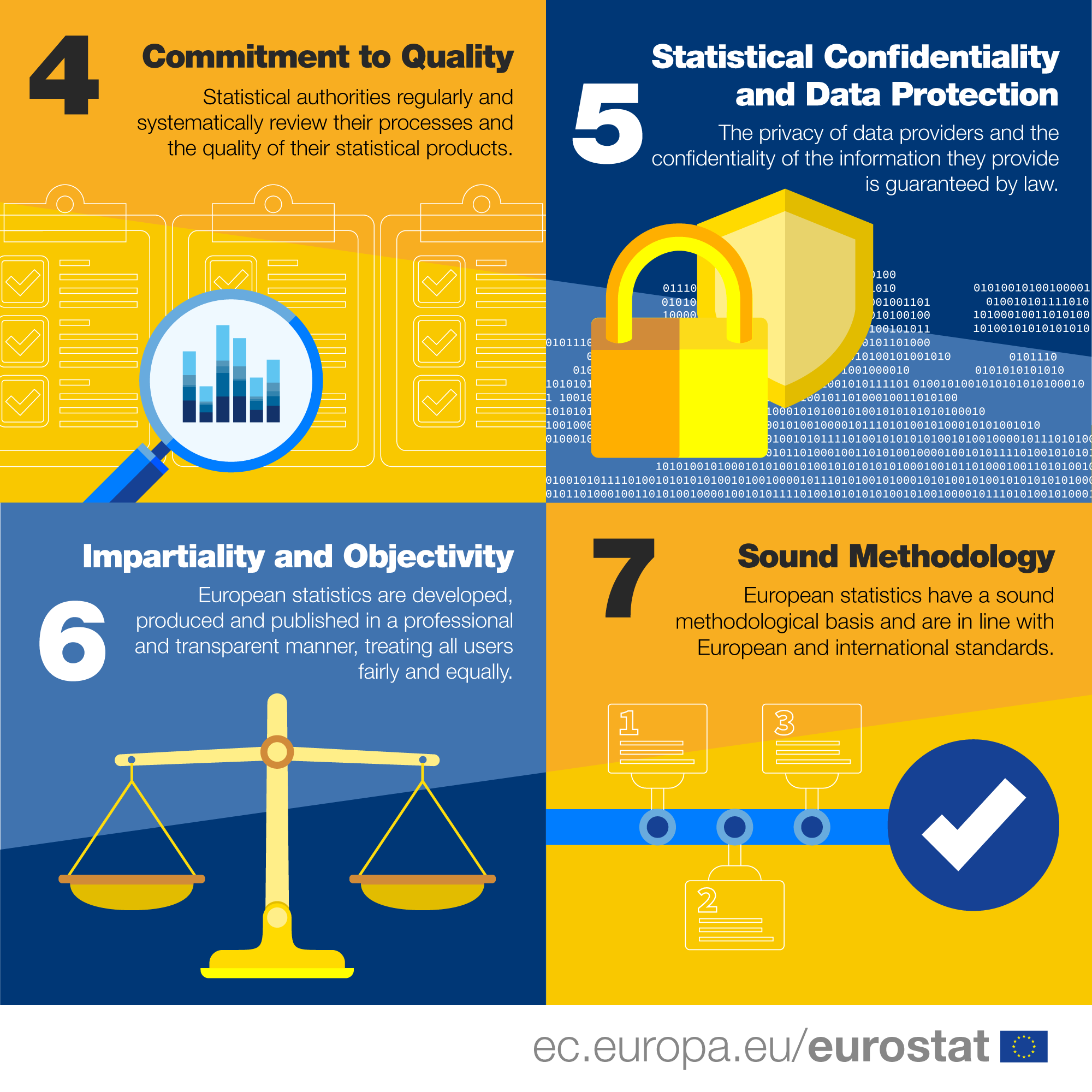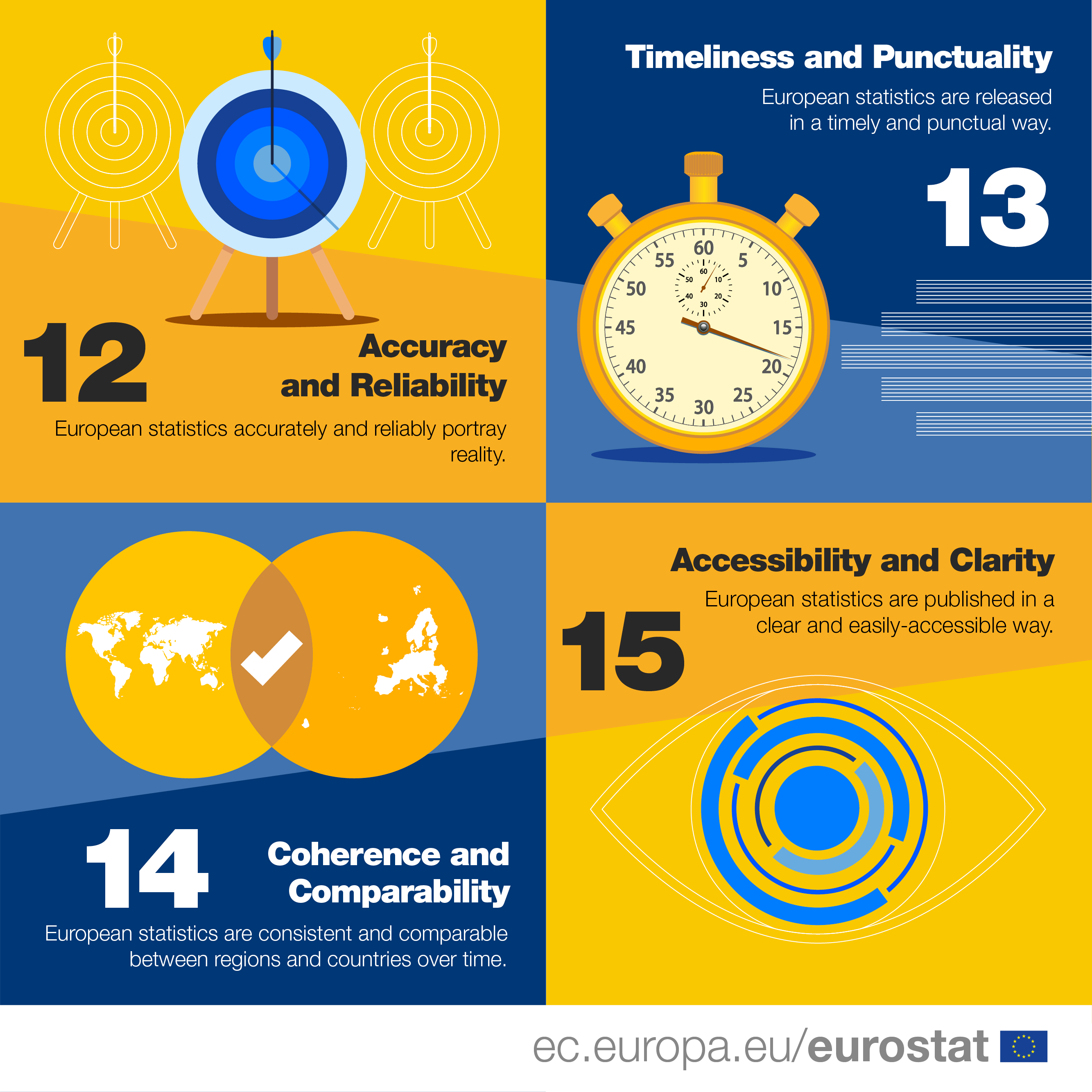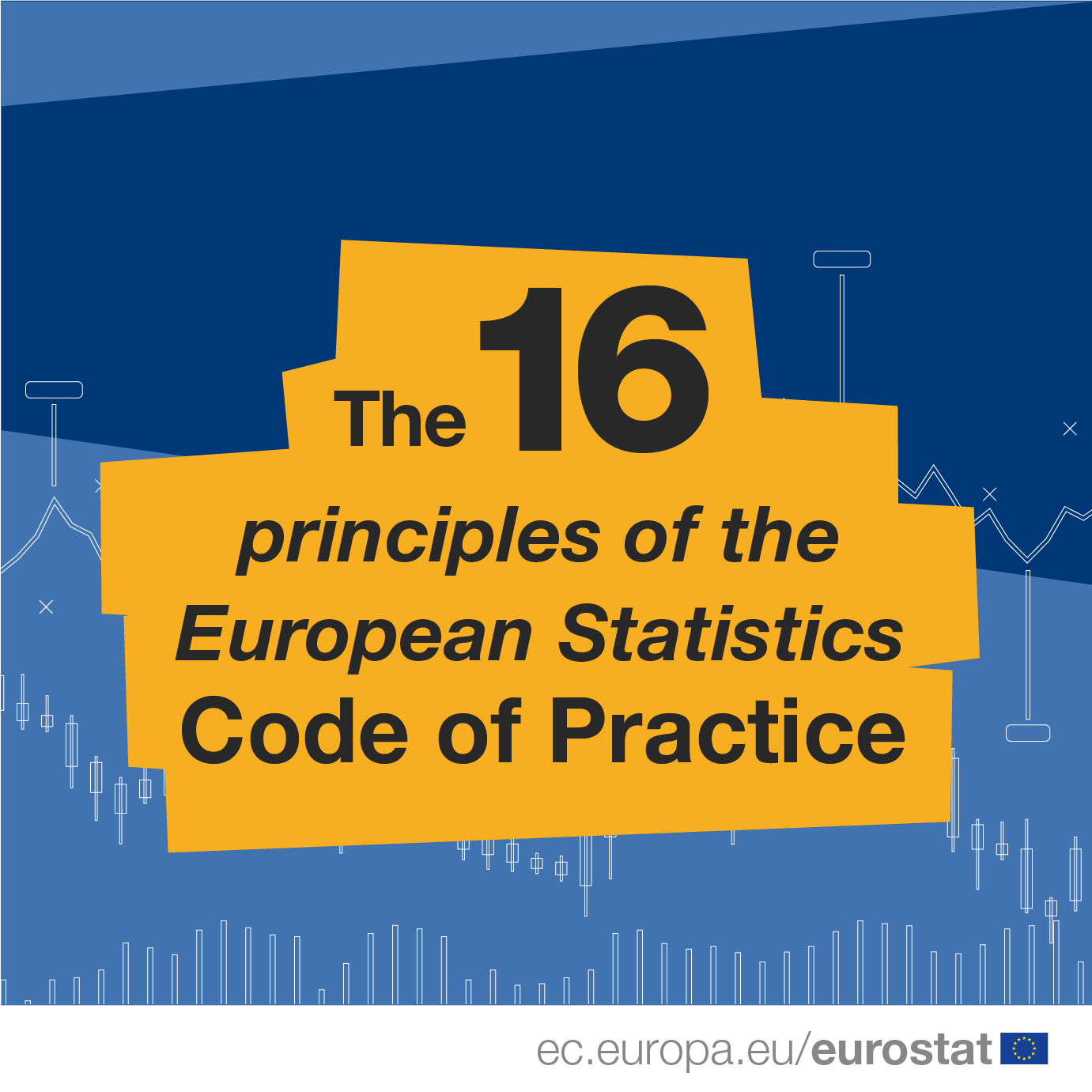
Code de bonnes pratiques de la statistique européenne
Préserver la qualité en suivant 16 principes majeurs
Le code de bonnes pratiques de la statistique européenne est la pierre angulaire du cadre de qualité. Il fixe les normes relatives à la création, la production et la communication des statistiques européennes.
Il définit 16 principes majeurs couvrant l'environnement institutionnel dans le cadre duquel les autorités statistiques européennes et nationales opèrent ainsi que les processus et résultats statistiques. Il inclut également un ensemble de 84 indicateurs des meilleures pratiques et normes pour chacun des 16 principes. Ces principes et indicateurs fournissent une référence pour l'examen de l'application du code de bonnes pratiques, contribuant ainsi à accroître la transparence du système statistique européen. Nous vous invitons également à lire nos infographies ci-dessous.
Publication du code de bonnes pratiques en plusieurs langues

Historique du code de bonnes pratiques
| Date | Évènement |
|---|---|
| 24 février 2005 | Adoption du code de bonnes pratiques par le Comité du programme statistique. |
| Septembre 2011 | Révision du code de bonnes pratiques en fonction des résultats du 1er cycle d'examen par les pairs du SSE |
| Novembre 2017 | Révision du code de bonnes pratiques en fonction des résultats du 2e cycle d'examen par les pairs du SSE. |
Les 16 principes du Code de bonnes pratiques de la statistique européenne





